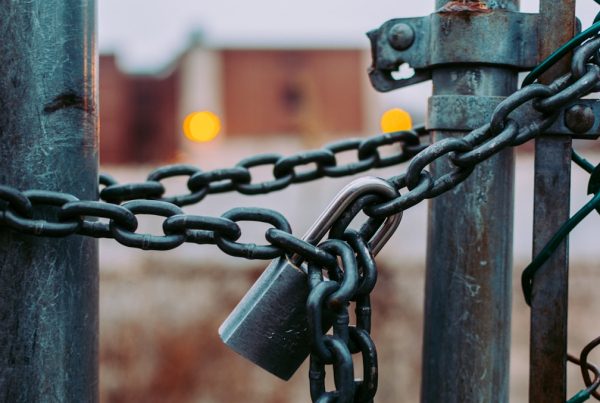In the ever-evolving landscape of cyber threats, BianLian ransomware has emerged as a significant concern for both individuals and organizations. This malicious software is designed to encrypt files on infected systems, rendering them inaccessible until a ransom is paid to the attackers. The name “BianLian,” which translates to “changing faces” in Chinese, aptly reflects the ransomware’s ability to adapt and evolve, making it a formidable adversary in the realm of cybersecurity.
As you delve deeper into the intricacies of BianLian, you will discover not only its operational mechanics but also the profound implications it has on your digital life. Understanding BianLian ransomware is crucial in today’s digital age, where reliance on technology is at an all-time high. The threat it poses is not limited to large corporations; individuals, small businesses, and even government entities are vulnerable to its attacks.
As you navigate through this article, you will gain insights into how BianLian operates, the impact it has on various sectors, and the strategies you can employ to protect yourself from becoming a victim of this insidious malware.
Key Takeaways
- BianLian Ransomware is a new type of ransomware that has been causing havoc in the cybersecurity world.
- The ransomware works by infiltrating systems and encrypting files, demanding payment for their release.
- Businesses and individuals have suffered significant financial and reputational damage as a result of BianLian Ransomware attacks.
- Preventing and mitigating BianLian Ransomware attacks requires a multi-layered approach including regular software updates, employee training, and robust cybersecurity measures.
- The evolution of BianLian Ransomware and its variants poses a significant challenge for law enforcement and cybersecurity agencies, requiring constant adaptation and vigilance.
How BianLian Ransomware Works
BianLian ransomware employs sophisticated techniques to infiltrate systems and execute its malicious agenda. Typically, it spreads through phishing emails, malicious attachments, or compromised websites. Once you inadvertently download the ransomware, it begins its encryption process, targeting files that are critical to your operations or personal use.
The encryption is often swift and stealthy, making it difficult for you to detect the attack until it’s too late. The ransomware then generates a ransom note, demanding payment in cryptocurrency in exchange for the decryption key. The technical prowess of BianLian lies in its ability to adapt its encryption methods and evade detection by traditional antivirus software.
It often utilizes advanced obfuscation techniques to hide its presence within your system. This means that even if you have security measures in place, there’s still a risk of falling victim to this ransomware. The complexity of its operations makes it a persistent threat, as it can easily modify its code to bypass security protocols.
Understanding these mechanisms is essential for you to recognize potential vulnerabilities in your systems.
The Impact of BianLian Ransomware on Businesses and Individuals

The ramifications of a BianLian ransomware attack can be devastating for both businesses and individuals. For organizations, the immediate impact often includes operational downtime, loss of critical data, and financial strain due to ransom payments or recovery efforts. You may find that your business reputation suffers as clients and partners lose trust in your ability to safeguard their information.
The long-term effects can be even more severe, leading to legal repercussions and increased insurance premiums as you grapple with the fallout from an attack. On a personal level, the consequences can be equally dire. If your personal files—such as family photos, important documents, or financial records—are encrypted by BianLian, you may face significant emotional distress and financial loss.
The decision to pay the ransom is fraught with uncertainty; there’s no guarantee that the attackers will provide the decryption key even after payment. This creates a dilemma for individuals who may feel they have no choice but to comply with the demands of cybercriminals. The psychological toll of such an attack can linger long after the immediate crisis has passed.
Strategies for Preventing and Mitigating BianLian Ransomware Attacks
| Strategies | Description |
|---|---|
| Regular Software Updates | Ensuring all software and operating systems are regularly updated to patch vulnerabilities. |
| Employee Training | Providing training to employees on how to identify and avoid potential ransomware threats. |
| Strong Password Policies | Implementing strong password policies and multi-factor authentication to prevent unauthorized access. |
| Network Segmentation | Segmenting networks to limit the spread of ransomware in case of an attack. |
| Regular Data Backups | Regularly backing up data and storing it in a secure, off-site location to mitigate the impact of a ransomware attack. |
To safeguard yourself against BianLian ransomware, proactive measures are essential. One of the most effective strategies is to maintain regular backups of your data. By storing copies of your important files on external drives or cloud services, you can mitigate the impact of an attack.
In the event that your system is compromised, having access to unencrypted backups allows you to restore your data without succumbing to ransom demands. Additionally, investing in robust cybersecurity solutions is crucial. You should ensure that your antivirus software is up-to-date and capable of detecting and neutralizing emerging threats like BianLian.
Implementing multi-factor authentication (MFA) adds an extra layer of security by requiring additional verification steps before granting access to sensitive information. Furthermore, educating yourself and your employees about recognizing phishing attempts and suspicious links can significantly reduce the likelihood of inadvertently downloading ransomware.
The Evolution of BianLian Ransomware and its Variants
BianLian ransomware is not static; it continues to evolve as cybercriminals refine their tactics and techniques. Over time, variants of BianLian have emerged, each with unique features designed to exploit specific vulnerabilities in systems. These variants may employ different encryption algorithms or utilize new methods for spreading across networks.
As you stay informed about these developments, you can better prepare yourself against potential threats. The evolution of BianLian also reflects broader trends in the ransomware landscape. Cybercriminals are increasingly adopting a double extortion model, where they not only encrypt data but also threaten to leak sensitive information if the ransom is not paid.
This tactic adds pressure on victims and complicates their decision-making process. By understanding these trends and the adaptive nature of BianLian ransomware, you can remain vigilant and take proactive steps to protect your digital assets.
The Role of Law Enforcement and Cybersecurity Agencies in Combating BianLian Ransomware

Law enforcement agencies and cybersecurity organizations play a pivotal role in combating BianLian ransomware and similar threats. They work tirelessly to investigate attacks, track down perpetrators, and develop strategies for prevention and response. As a member of society increasingly reliant on technology, you should be aware of their efforts and how they can assist you in times of crisis.
Collaboration between international law enforcement agencies has become essential in addressing the global nature of cybercrime. By sharing intelligence and resources, these agencies can disrupt ransomware operations more effectively. Additionally, cybersecurity agencies provide valuable resources for individuals and businesses seeking guidance on best practices for protecting themselves against ransomware attacks.
Engaging with these organizations can empower you with knowledge and tools necessary for safeguarding your digital life.
Case Studies of BianLian Ransomware Attacks
Examining real-world case studies of BianLian ransomware attacks can provide valuable insights into its impact and operational methods. For instance, consider a mid-sized company that fell victim to a BianLian attack after an employee clicked on a malicious link in an email. Within hours, critical files were encrypted, leading to significant operational disruptions and financial losses.
The company faced a difficult decision: pay the ransom or attempt recovery without the decryption key. Another case involved a healthcare provider that experienced a BianLian attack during a critical period when patient data was at risk. The attackers not only encrypted sensitive medical records but also threatened to release them publicly if their demands were not met.
This situation highlights the ethical implications of ransomware attacks and the potential harm they can inflict on vulnerable populations. By analyzing these case studies, you can better understand the real-world consequences of BianLian ransomware and the importance of preparedness.
The Future of BianLian Ransomware and the Importance of Vigilance
As technology continues to advance, so too will the tactics employed by cybercriminals like those behind BianLian ransomware. The future may see even more sophisticated variants that exploit emerging technologies or vulnerabilities in new systems. Therefore, maintaining vigilance is paramount for both individuals and organizations alike.
You must remain informed about potential threats and continuously adapt your security measures to stay one step ahead. In conclusion, while BianLian ransomware poses significant risks, understanding its workings and impacts empowers you to take proactive steps toward protection. By implementing effective strategies for prevention and remaining aware of evolving threats, you can safeguard your digital assets against this insidious malware.
The fight against ransomware is ongoing; your vigilance today can make all the difference in securing a safer digital future for yourself and those around you.
There is an interesting article on cybersecuritydecoder.com that discusses the importance of protecting critical infrastructure from cyber threats. The article highlights the potential risks posed by ransomware attacks, such as the bianlian ransomware, on essential services and systems. To learn more about this topic, you can read the article here.
FAQs
What is BianLian ransomware?
BianLian ransomware is a type of malicious software that encrypts files on a victim’s computer and demands a ransom in exchange for the decryption key.
How does BianLian ransomware infect computers?
BianLian ransomware typically infects computers through phishing emails, malicious websites, or exploiting software vulnerabilities. Once a computer is infected, the ransomware encrypts files and displays a ransom note demanding payment.
What type of files does BianLian ransomware target?
BianLian ransomware targets a wide range of file types, including documents, images, videos, and more. It encrypts these files to make them inaccessible to the victim.
How can victims protect themselves from BianLian ransomware?
To protect against BianLian ransomware, individuals and organizations should regularly update their software, use strong and unique passwords, be cautious of email attachments and links, and use reputable antivirus and antimalware software.
What should victims do if they are infected with BianLian ransomware?
If a victim is infected with BianLian ransomware, they should immediately disconnect the infected computer from the network to prevent further spread, report the incident to law enforcement, and seek assistance from cybersecurity professionals to determine the best course of action.



